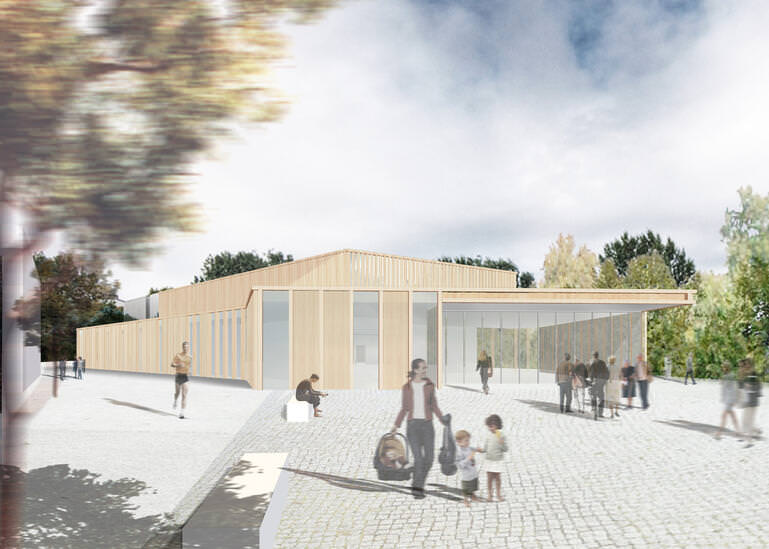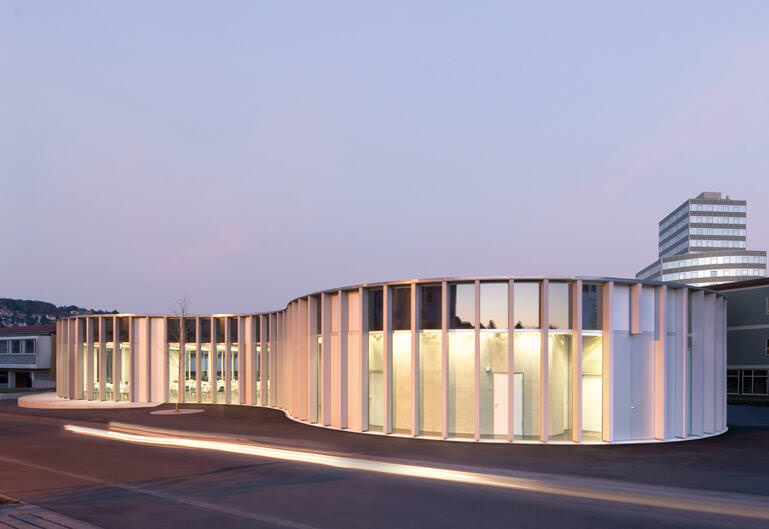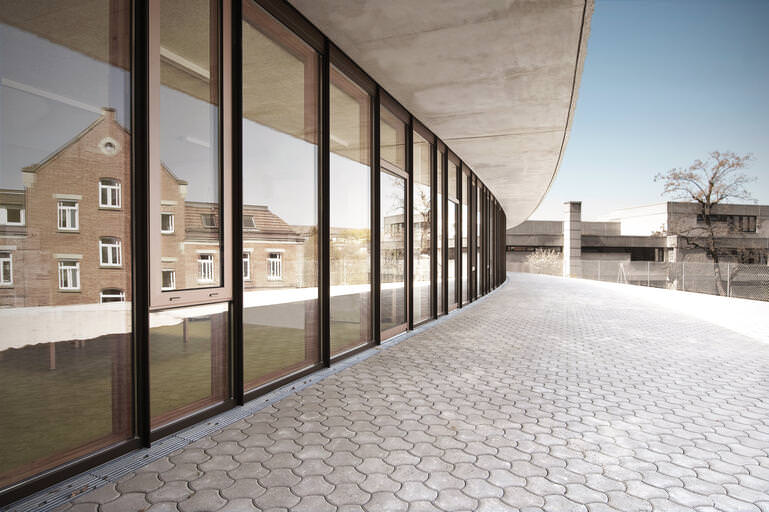Public like a town house, just like a barn.
Parkscheune, Großostheim
Competition contribution to the new construction of the park barn Großostheim - The park barn marks the beginning of a series of public facilities that extend across the newly designed outdoor area from the parking barn to the market square. As a result, the parking barn and its surroundings, in addition to the functional task of a parking building, have a special representational and identification role. The park barn is also to be used as a public venue, its strict wood dress has an urban character, the outdoor facilities are not just parking, but rather adapted to the multi-layered environment, multi-functional recordable area. Just like a barn, the organization of the park building remains at ground level and thus can do without elaborate ramps and other costly vertical development elements such as internal stairs or elevators.
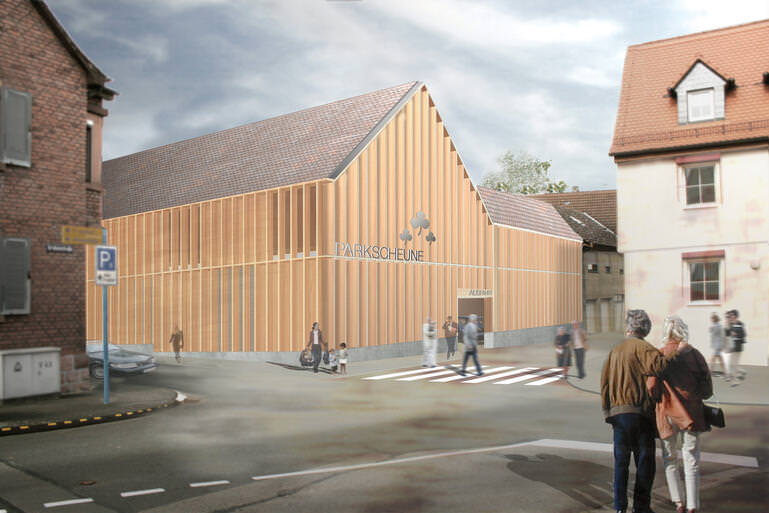

Confident insertion
The cubature of the new building is borrowed from the existing stock and subordinate to the urban development of the given building structure, but at the same time confidently occupies the prominent corner situation at the entrance to the city center. The open spaces adapt to the adjoining buildings, while the outdoor parking spaces form a clearly defined courtyard, defined by the surrounding sandstone wall and the step system.
In the area facing the street between the market square and the nursery, the new parking barn with its outdoor facilities creates an attractive new route connection, which enables barrier-free access to and from the market place via an elevator and links public facilities with each other. The entrances are open, so that new perspectives are created and the new path connection is anchored in the consciousness of the population.
Architecture and construction
The town planning sensibility is also reflected in the choice of materials and the design of the facades. The hall is a pure timber construction in which the supporting structure becomes a formal design element. The frames of the construction appear in the exterior of the building as fine slats, which rhythmically divide the façade. The arrangement of these vertical slats clearly defines the volume of construction and at the same time provides a degree of transparency depending on the viewing angle. The interplay of open, semi-open and closed façade sections allows insights into the interior while at the same time ensuring social control.
A horizontal division responding to the levels of the surrounding buildings reduces the buckling length of the slender wooden bulkheads. The construction and the appearance of the building interpret the traditional carpentry craft of the landmarked half-timbered buildings. While the eaves height of the surrounding buildings is recorded to the street side, the volume can be reduced to the private rear side by lowering the eaves.
Depending on the angle of view, the façade, which seems to be homogeneous from the outside over its deep wooden bulkheads, reveals a scale adapted to the environment due to the structure of the skin behind it.
In the interior of the spacious one-storey parking space, the clothing elements visible only between the bulkheads become the design element. The outline of the wallcovering creates the impression of inward-facing house facades - the visitor also experiences a piece of urban space in the interior.
All entrances are equipped with simple space-saving sliding gates. Thus, both the entrance to the area as well as entry and exit of the parking barn can be completely closed even when needed. However, the pedestrian passage through the outdoor area remains accessible in any case.
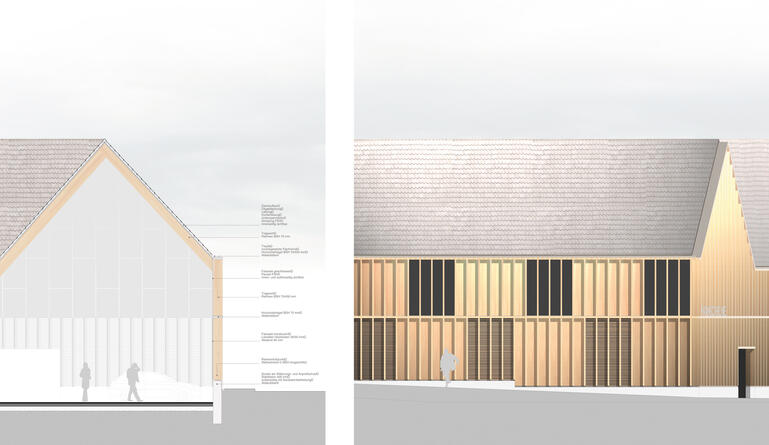
“The high, open, completely column-free interior of the parking barn makes it a must-have when you need it.”
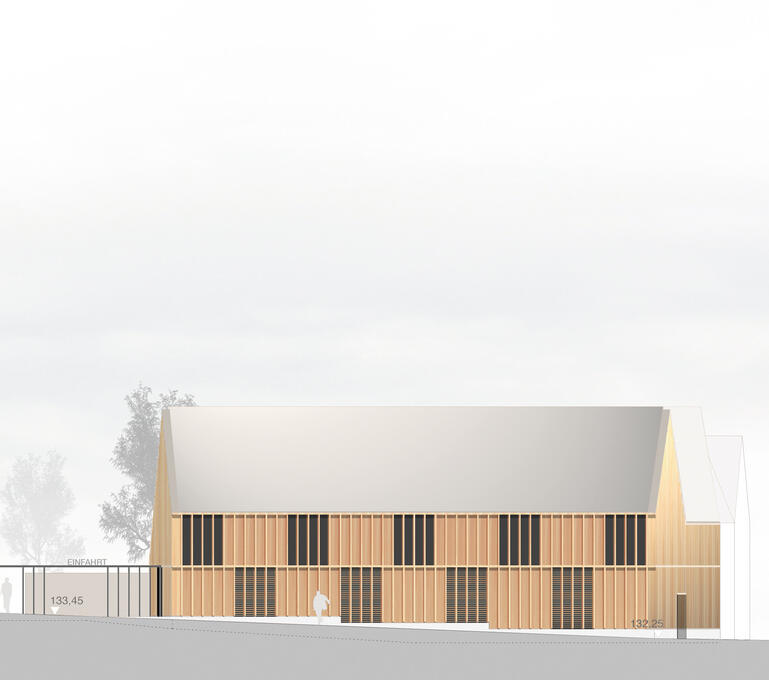
Adequacy of means
The use of similar, glazed laminated glulam frame in a construction similar to the industrial construction comes without secondary structure and without separate facade substructure. The simple support structure of the narrow wooden frames takes over the load transfer, while the flat clothing of the interior provides for the stiffening of the minimized construction.
To ensure soundproofing to the garden-side area of the neighbors, the façade is completely closed with clam shell elements filled with mineral wool between the bulkheads. A strip of light in the roof next to the street facing openings for daylight. The roof is designed as an asymmetric saddle roof with a local brick cover.
The entire construction stands on a pedestal, which forms a continuation of the economical strip foundation a protective seal against splashing water and at the same time the necessary impact protection for the vehicles. In order to do without further foundations, the floor of the parking barn is paved according to its functional requirements.
Natural surfaces characterize the exterior of the parking barn. The functional treatment of the floor coverings - concrete pavement for the lanes, grass pavers for the parking spaces and cobblestones in the walking areas provides a differentiated, vivid picture.
sustainability
The use of natural materials in the form of glued laminated timber for the entire construction in combination with the sandstone-clad concrete base is an ecologically and economically sustainable solution.
By waiving a second parking level thereby eliminating operating costs for another elevator. Skylights ensure an almost complete natural exposure at daytime. On the roof there is the possibility of integrating a photovoltaic system, which could be used to supply surrounding public facilities.
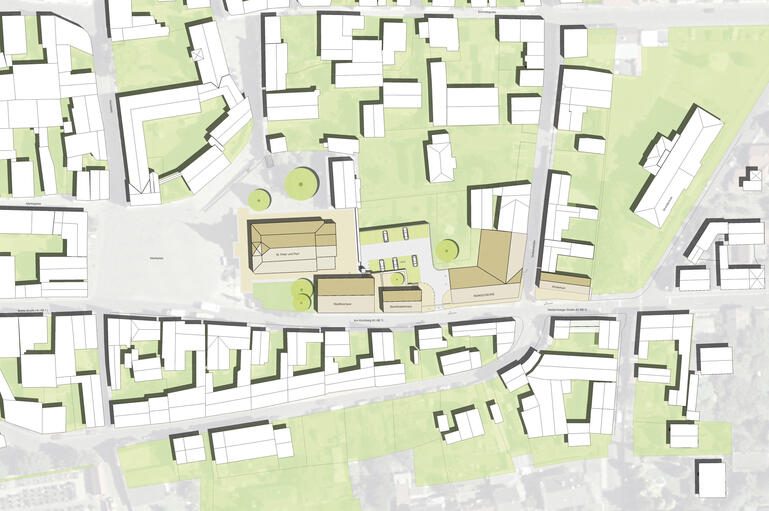
Project information
Location
Großostheim, Germany
Client
Market Großostheim
Type of project
Competition
Period
2011
Completion
Competition
Parkscheune Großostheim, 1st prize
